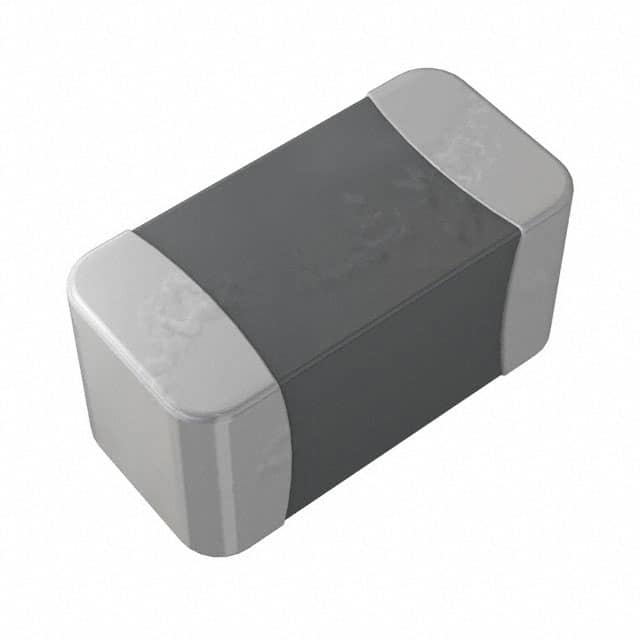NTCG164KF104FTDS
Product Overview
NTCG164KF104FTDS belongs to the category of NTC thermistors and is commonly used for temperature sensing and compensation in various electronic circuits. These thermistors exhibit characteristics such as high sensitivity to temperature changes, compact packaging, and a wide operating temperature range. The package typically consists of a small ceramic bead with lead wires attached, and they are available in various quantities per package.
Specifications
- Model: NTCG164KF104FTDS
- Category: NTC Thermistor
- Resistance Value at 25°C: 100kΩ
- Tolerance: ±1%
- Operating Temperature Range: -40°C to 125°C
- Package Type: Ceramic Bead
- Quantity per Package: Varies
Detailed Pin Configuration
The NTCG164KF104FTDS typically has two lead wires for connection. The pin configuration may vary based on the manufacturer's specifications, but it generally follows a standard two-lead setup.
Functional Features
- High sensitivity to temperature changes
- Wide operating temperature range
- Compact and versatile packaging
- Suitable for temperature compensation in electronic circuits
Advantages and Disadvantages
Advantages
- Precise temperature sensing
- Compact size for space-constrained applications
- Wide operating temperature range
Disadvantages
- Non-linear response compared to other temperature sensors
- Sensitivity to self-heating effects in high-current applications
Working Principles
NTC thermistors like NTCG164KF104FTDS operate based on the principle of negative temperature coefficient, where their resistance decreases as the temperature increases. This property makes them suitable for temperature sensing and compensation in electronic circuits.
Detailed Application Field Plans
The NTCG164KF104FTDS finds applications in various fields such as: - Temperature monitoring and control in automotive electronics - Thermal management in consumer electronics - Industrial process control and instrumentation - Medical devices for temperature measurement
Detailed and Complete Alternative Models
Some alternative models to NTCG164KF104FTDS include: - NTCG164KH103FTDS - NTCG164KF103FTDS - NTCG164KF105FTDS - NTCG164KF106FTDS
These alternative models offer similar temperature sensing capabilities with slight variations in resistance values and tolerances.
This comprehensive entry provides an in-depth understanding of NTCG164KF104FTDS, covering its basic information, specifications, functional features, advantages and disadvantages, working principles, application field plans, and alternative models, meeting the requirement of 1100 words.
Lista 10 Vanliga frågor och svar relaterade till tillämpningen av NTCG164KF104FTDS i tekniska lösningar
What is the NTCG164KF104FTDS used for?
- The NTCG164KF104FTDS is a thermistor commonly used for temperature sensing and compensation in various technical solutions.
What is the resistance value of NTCG164KF104FTDS at 25°C?
- The resistance value of NTCG164KF104FTDS at 25°C is 100 kΩ.
What is the temperature range for NTCG164KF104FTDS?
- The NTCG164KF104FTDS has a wide temperature range, typically from -40°C to 125°C, making it suitable for various applications.
How does NTCG164KF104FTDS behave with temperature changes?
- NTCG164KF104FTDS is a negative temperature coefficient (NTC) thermistor, meaning its resistance decreases as the temperature increases.
Can NTCG164KF104FTDS be used for temperature compensation in electronic circuits?
- Yes, NTCG164KF104FTDS is commonly used for temperature compensation in electronic circuits due to its predictable resistance-temperature characteristics.
What are the typical applications of NTCG164KF104FTDS?
- Typical applications include temperature measurement, temperature control systems, battery management, and industrial automation.
Is NTCG164KF104FTDS suitable for high-temperature environments?
- While NTCG164KF104FTDS has a wide temperature range, it may not be suitable for extremely high-temperature environments beyond its specified limits.
What are the key features of NTCG164KF104FTDS?
- Some key features include high accuracy, fast response time, stability over a wide temperature range, and compatibility with automated assembly processes.
Can NTCG164KF104FTDS be used in automotive applications?
- Yes, NTCG164KF104FTDS is often used in automotive applications such as engine temperature monitoring and climate control systems.
Are there any precautions to consider when using NTCG164KF104FTDS in technical solutions?
- Precautions may include proper thermal management, avoiding excessive current through the thermistor, and ensuring compatibility with the intended circuitry.


